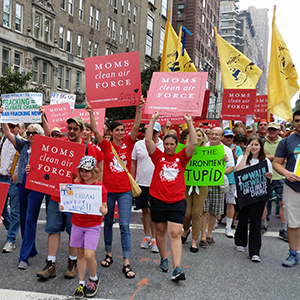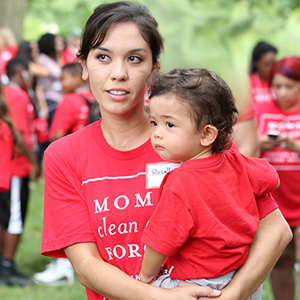
Have you ever wondered why some couples have difficulty conceiving? COUNT DOWN: How the Modern World Is Threatening Sperm Counts, Altering Male and Female Reproductive Development, and Imperiling the Future of the Human Race, by Shanna Swan, PhD, is an unflinching account on reduced fertility in people. The cause is largely attributed to environmental factors and manufactured hormone-disrupting chemicals in daily modern life.
The underlying message of COUNT DOWN is clear: we are reducing the capacity for our own human species to reproduce, and we appear to be approaching a tipping point. Scientists point out that we are knowingly doing this to ourselves. It is a terrible truth. But to look away from the facts outlined in COUNT DOWN is akin to driving blindly off a cliff when there is still time to course correct.
In spite of the imposing title, I found this an incredibly easy and absorbing read. Dense science is made accessible and understandable. The threads of connection Dr. Swan sews between exposure to chemicals and intergenerational effects to offspring is important and devastating. Even though I knew some of the science already, including the impact of endocrine disrupting chemicals (EDCs) on our lives, I found the book to be a gut punch, over and over. At times I’d ask myself, How can humanity be this idiotic? At other times, I cheered because it seemed this book will force us to address and reverse the trends. As Dr. Swan says, if we don’t address this, “humanity may be marching toward extinction.”
EDCs are described as acting like “imposter hormones.” They bind to receptor sites where “real” hormones should land and thereby trick our bodies into responding. The result can be too much or too little of a hormone being released; it can happen at the wrong time and change where natural hormones should go.
Swan covers some of the chemicals of our modern age known to have endocrine-altering capacity, such as phthalates, bisphenol A (BPA), flame retardants, pesticides, perfluoroalkyl compounds (PFCs), and PCBs. Before the existence of these chemicals 100 years ago, the changes they are causing didn’t happen in humans and were certainly not found at this scale and pace.
Swan sheds light on what she calls “the other 1%.” She thinks of the 1% effect as a summary of changes in males and females biologically and physiologically each year. Male sperm count is declining at about 1% a year as are testosterone levels. While incidence of testicular cancers and erectile dysfunction are climbing at 1%. For females, lots of factors exist: women’s eggs die off and the quality wanes, women are waiting longer to get pregnant, there’s a higher prevalence of polycystic ovary syndrome (PCOS), and more. Miscarriage rates are increasing by about 1% each year, and fertility-related rates are also on a downward trend at the same pace.
While 1% may seem small, if you chart out the losses, the message is clear: we are in a fertility free fall. And the end of our species is within sight if we do nothing. So can we respond now to prevent a future where only the very affluent and very young, fit, and perhaps lucky can procreate successfully?
COUNT DOWN covers fertility in intricate detail and finds these issues make lousy odds for successful conception. Researchers used compiling data from around the globe and found that the total fertility rates declined globally by 49% between 1950 and 2017. The quality of male sperm is declining rapidly while simultaneously women have diminished egg quality and increasingly try and get pregnant later.
The book doesn’t just evaluate fertility issues. There’s so much more at play—especially when it comes to environmental chemicals and body chemistry. The book looks at gender fluidity and whether or not endocrine disruption plays a role in the upswing in nonbinary gender identity. Swan’s expertise on sexual and reproductive development, and how it can be affected by environmental influences, lays out the science and the questions without prejudice.
Swan points to examples where real-world exposures to drugs, for example, can blur the development of differences between the genders. While there are difficulties in actually studying humans in a controlled environment, she also points to chemical exposures that alter sexual behaviors and even the sex of frogs and fish.
While it’s clear we all live somewhere on the gender spectrum, we should be asking if exposure to chemicals is connected to how we form gender identity and how these changes further impact reproduction.
While COUNT DOWN details the damage to our collective fecundity, it also provides reason for some hope. With lifestyle improvements, men can actually “reset” their sperm production in as little as 60 to 70 days. Women’s eggs don’t have the same regenerative capacity, however, so management must come from avoiding certain exposures in the first place. The book outlines numerous lifestyle choices to help reduce exposures going forward.
The book states: “The food we eat, the air we breathe, the products we use, the emotions we feel have the potential to influence not only how our genes are expressed but also how those of our unborn descendants might behave in the future. That’s right—our lifestyles and environments can have ripple effects on the health and development of our unborn children and grandchildren through mechanisms that foster cellular memory and can be maintained across several generations.”
Swan also reminds us that changes happening to humans are reflected elsewhere in the ecosystem. What we are doing to ourselves, we are doing to animal and plant species too. Other authors, from Rachel Carlson to Theo Colborn, Pete Myers to Leo Trassande, have tried to capture the world’s attention regarding these chemicals and their devastating impact with little luck. With COUNT DOWN, I hope that we are finally ready to confront this daunting predicament and act.




